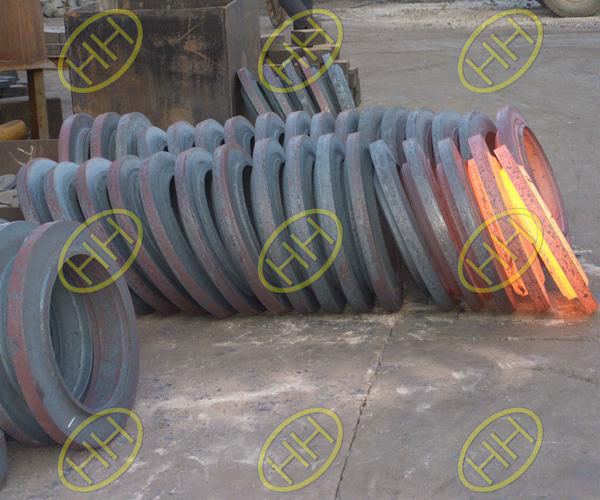Why should steel ingots be uniformly annealed in the production of flange forgings?
Flange forgings are often used in the production of ingots (steel ingots). The homogenization annealing of steel ingots is to heat the ingots with complex chemical composition, rapid non-equilibrium crystallization and poor plasticity to a temperature close to the melting point for a long time to keep the alloy atoms Fully diffuse to eliminate the inhomogeneity of chemical composition and structure, and improve the plastic deformation ability of steel ingots when manufacturing flange forgings. The characteristic of this kind of annealing is that the change of structure and performance is irreversible, and it can only change to the equilibrium direction. Ingot homogenization annealing is the homogenization of the ingot through the dissolution of phases and the diffusion of atoms under high temperature heating conditions, which plays an important role in the future flange forging processing.
In the homogenization annealing process of the steel ingot, in addition to the diffusion of atoms in the crystal, the structure changes are also accompanied. The main structural changes in homogenization annealing are the elimination of dendrite segregation and the dissolution of non-equilibrium phases. It is through long-term heat preservation at high temperature, fully diffused atoms to eliminate dendrite segregation and achieve uniform composition. For alloys that are still single-phase in the non-equilibrium state, the main process of homogenization annealing is the homogenization of the composition in the solid solution grains. When there is a non-equilibrium metastable phase in the alloy, the above two main processes will occur. In addition, the homogenization annealing process is often accompanied by the decomposition of supersaturated solid solution, insoluble excess phase aggregation and spheroidization, grain growth, phase transition, and possible quenching effects due to excessive cooling.


